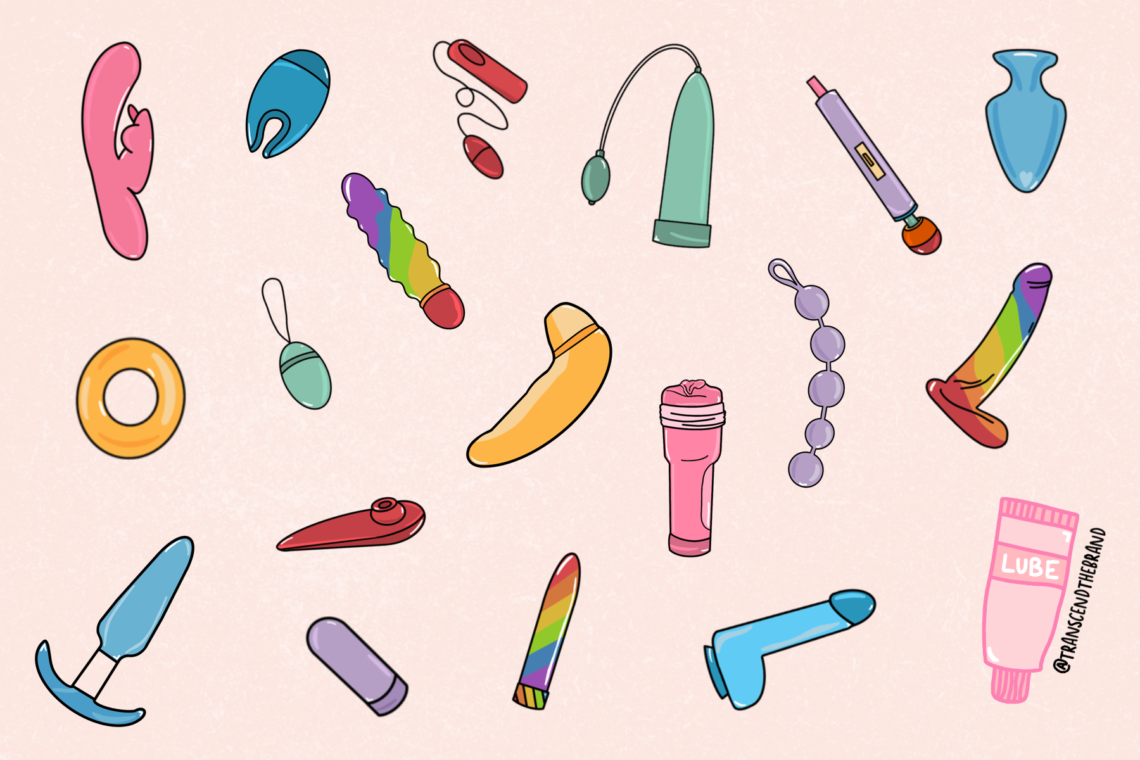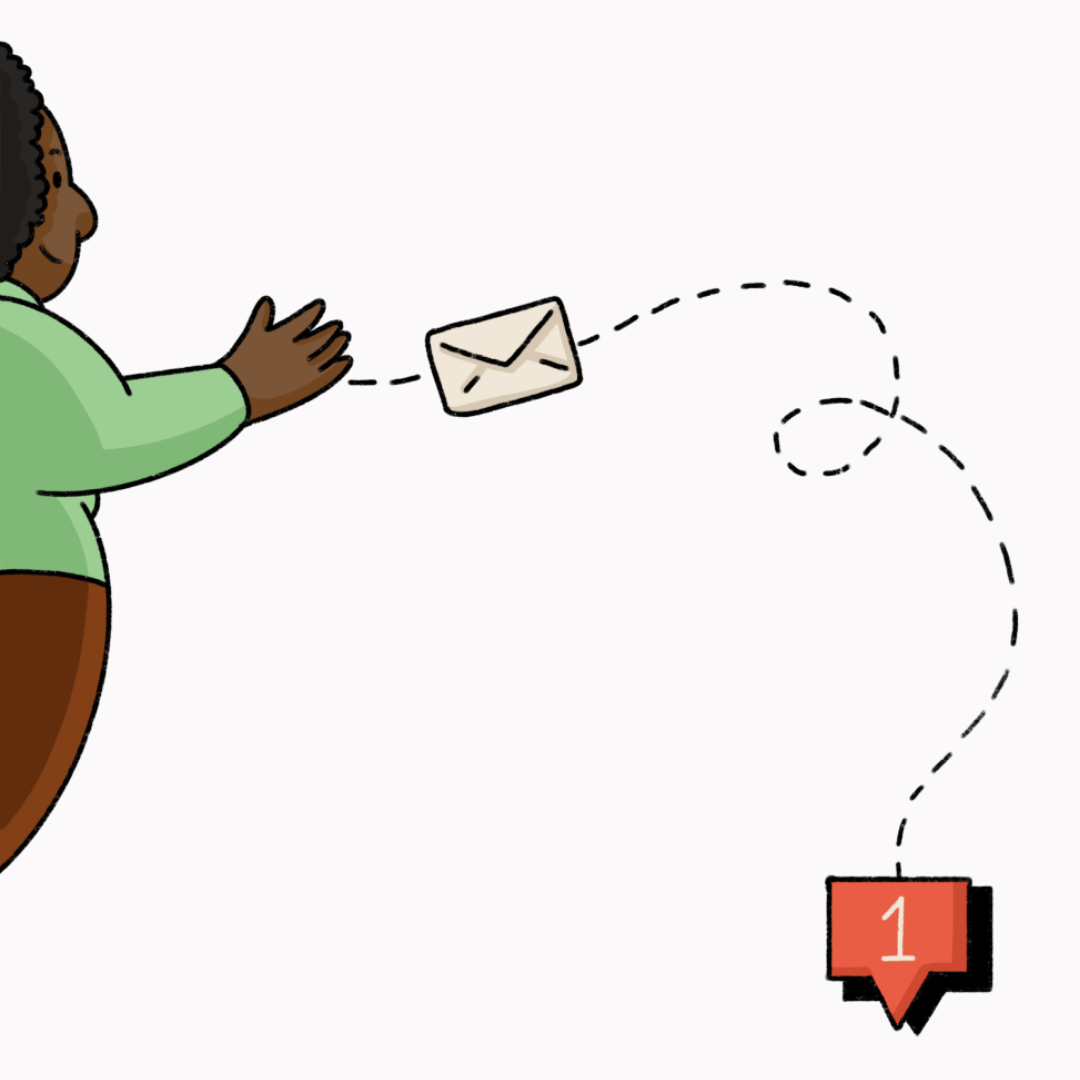Written by: Dr. Michelle Cohen (she/her), MD.
Edited by: Shelby MacGregor (she/her).
Public opinion on sex toys tends to fall into one of two categories: 1) silly and fun, if gratuitously pornographic, or 2) seedy and gross, with few redeeming qualities. And while toys can certainly just be for lighthearted fun and games, they can also be important enhancers of sexual health.
The complete history of sex toys goes back thousands of years, but they were also some of the first mass produced items of the industrial era. How widely they were seen at the turn of the century as sexual items (1) rather than medical devices (2) is a topic of debate amongst experts. By the mid-20th century, their use for masturbation or in pornography became more explicit (3) and any remaining medical connection fell away. Since then toys have been tied to women’s liberation and the reclamation of female sexuality, but also paradoxically to a larger sex industry rife with exploitation, bigotry and abuse (4).
What are some of the benefits?
Physical exploration is important for sexual health, especially for people who are discovering their bodies for the first time or re-discovering their bodies after a change. Sex toys can be very helpful and can streamline the process of learning what does – and doesn’t – work. Toys can be used solo or partnered, which can double the benefit: what you learn solo you can teach a partner, and exploration with a partner can fuel solo experimentation and discovery.
Many medical conditions, medications and surgical procedures can lead to reduced genital sensation, making orgasm or simply enjoyable sex harder to achieve. Libido can also be dampened by a wide array of physiological or medical factors and this can affect how sex feels. Being able to easily ramp up stimulation or focus sensation on a certain part of the body can improve sex quality, and this is where vibrators can be very helpful (5). As well, toys like cock rings or sensitizing gels that temporarily increase blood flow can improve sensation or erection firmness and duration. Enhancing the ability to have an orgasm or maintain an erection can have big impacts on mood and overall well being.
Dildo-like instruments called vaginal dilators are used for a number of medical issues (6). They come in a variety of sizes for gentle stretching of vaginal tissue, and may be recommended after vaginal or vulvar surgery. Dilators can also be part of recovery for transgender women or non-binary folks who have had bottom surgery. And while they aren’t strictly-speaking sexual in nature, dilators can be combined with sexual activity and are often more readily available at sex toy stores than medical supply stores (7).
Toys can also open a new menu of sexual positions, whether partnered or solo. An individual may have physical restrictions or there may be an incompatibility between partners that make certain positions uncomfortable or impossible. Accommodations include specialized furniture, pillow-like wedges, hands-free toys and water-proof toys (8). Our culture rarely acknowledges the sexuality of people with disabilities (9), but good sexual health (and the tools to improve it) should be accessible to everyone.
What are some of the problems?
Perhaps the biggest barrier between people who would like to improve their sexual health and the sex toys that might help is their reputation. Being linked to pornography and the sex industry-at-large (10) is for many people an insurmountable mental barrier to considering toys as an option.
Fortunately, the broadening of the toy market has created a much more welcoming environment in general. The sex industry is still far from resolving its own issues with bigotry (11) and exploitation, so until this root cause is addressed it will likely always impact how sex toys are perceived.
Another stigma surrounding sex toys is that using them somehow diminishes the sexual experience, making it less real or less meaningful (12), or that “needing” a toy to enjoy sex is a physical or moral weakness. This is emblematic of our sex negative culture on a larger scale, wherein pleasure (especially for its own sake) is viewed with suspicion. Mixed in with this attitude is the deep-rooted misogyny that trivializes female sexual pleasure and the health of people with vaginas.
Cost is a key barrier as well, with high quality, well made toys often running upwards of $50. While quality control in the toy industry as a whole has improved over the past few decades, it’s still full of poorly made toys with low durability and cheap materials that can irritate skin or mucous membranes (13). It can take a bit of shopping around to find toys that work best for you, and for some this is financially daunting if not out of reach.
As sex toys can prompt experimentation, they can also sometimes lead to people trying new things in less than safe ways. There is always a risk of injury when putting an object near or inside delicate parts of the body, and it’s important not to ignore unexpected pain or discomfort.
Toys without a flared base should NOT be inserted into the body as they can become impossible to retrieve by yourself (as emergency physicians can attest). Toys can also be vectors for infection if shared, so safer sex practices with barriers like condoms, gloves or dental dams shouldn’t be forgotten.
A lesser known risk, often associated with vibration, is that prolonged stimulation can lead to transient numbness or decreased sensitivity (14). This can be toy-related, but not necessarily so (15). For some, a high degree of stimulation is an important part of their sexual response, and there’s nothing wrong with that. A varied diet of stimulation type and intensity is generally a good idea.
Access to information is another key barrier. Knowing which toys do what exactly to which body parts can be confusing, especially for someone trying to figure out what they like. Toys come in a wide variety of materials (16) (with a big range of costs), and care instructions can vary a lot too – for example, using the wrong type of lubricant can cause a toy to degrade.
Not Just Fun and Games
Sex toys can be fun and games, but they can also be important tools for sexual health (or both!). The stigma associated with toys, the culture of the industry that surrounds them, the cost of high quality toys and the availability of sexual health information can discourage people from considering them as an option, but that might end up being a lost opportunity for those wanting to improve their sexual health.
Feminist-owned sex toy stores are often oriented towards education and have knowledgeable staff; many also do community outreach and run seminars on sexual topics. Online stores can also be fonts of information: Come As You Are (17) has a number of sexual health pamphlets that I print and give to patients. They also provide a wealth of practical and inclusive info on toys of all kinds. Online reviews, especially on a website specific to sex toys, like The Toy (18), can be a discrete way to learn about one’s options. Oh Joy Sex Toy (19) takes the humble product review to the level of art in a sprawling and inclusive comic collaboration, offering toy reviews, sexual health basics and joyously diverse representations of human sexuality.
As sex toys enjoy greater availability and diversity, people looking to improve their sexual health will hopefully continue to have better and more equitable access to these useful tools.
References:
1. Lieberman H. On the Hunt for Early American Sex Toys. Jezebel. 2021 [cited 8 November 2021]. Available from: https://jezebel.com/on-the-hunt-for-early-american-sex-toys-1820176795
2. Adams K. Vibrators had a long history as medical quackery before feminists rebranded them as sex toys. The Conversation. 2021 [cited 8 November 2021]. Available from: https://theconversation.com/vibrators-had-a-long-history-as-medical-quackery-before-feminists-rebranded-them-as-sex-toys-132577
3. Dawson A. Sex toys: A Brief History – TheToy.org. TheToy.org. 2021 [cited 8 November 2021]. Available from: https://thetoy.org/sex-toys-a-brief-history/
4. Heaney K. The 30,000-Year History of the Sex Toy. The Cut. 2021 [cited 8 November 2021]. Available from: https://www.thecut.com/2017/11/the-30-000-year-history-of-the-sex-toy.html
5. Rullo J, Lorenz T, Ziegelmann M, Meihofer L, Herbenick D, Faubion S. Genital vibration for sexual function and enhancement: best practice recommendations for choosing and safely using a vibrator. Sexual and Relationship Therapy. 2018;33(3):275-285.
6. Herndon J. Vaginal Dilators: Uses, Types, and Tips for Use. Healthline. 2021 [cited 8 November 2021]. Available from: https://www.healthline.com/health/womens-health/vaginal-dilators#bottom-line
7. Learn About Dilators and Dilator Exercises. Come As You Are. 2021 [cited 8 November 2021]. Available from: https://www.comeasyouare.com/blogs/sex-information/learn-about-dilators-and-dilator-exercises
8. Learn About Sex and Disability. Come As You Are. 2021 [cited 8 November 2021]. Available from: https://www.comeasyouare.com/blogs/sex-information/sex-and-disability
9. Quarmby K. Disabled and Fighting for a Sex Life. The Atlantic. 2021 [cited 8 November 2021]. Available from: https://www.theatlantic.com/health/archive/2015/03/sex-and-disability/386866/
10. Zahra S. The stigma of sex work comes with a high cost. The Conversation. 2021 [cited 8 November 2021]. Available from: https://theconversation.com/the-stigma-of-sex-work-comes-with-a-high-cost-79657.
11. Lieberman H. Black Performers Make Millions for Porn Sites. All While Being Underpaid, Verbally Abused, and Subjected to Blatant Racism. Cosmopolitan. 2021 [cited 8 November 2021]. Available from: https://www.cosmopolitan.com/sex-love/a34642666/racism-porn-industry/
12. Moen E, Nolan M. Sex Toys in Relationships. Oh Joy Sex Toy. 2021 [cited 8 November 2021]. Available from: https://www.ohjoysextoy.com/sextoysrelationships/
13. Brabaw K. 7 Reasons Why You Should Invest in a Better Sex Toy. SELF. 2021 [cited 8 November 2021]. Available from: https://www.self.com/story/expensive-sex-toy
14. Herbenick D, Reece M, Sanders S, Dodge B, Ghassemi A, Fortenberry J. Prevalence and Characteristics of Vibrator Use by Women in the United States: Results from a Nationally Representative Study. The Journal of Sexual Medicine. 2009;6(7):1857-1866.
15. ‘Death Grip Syndrome’: Internet Myth or Penis Ruiner?. Vice.com. 2021 [cited 8 November 2021]. Available from: https://www.vice.com/en/article/nn97ag/is-death-grip-syndrome-a-masturbation-myth-293
16. Learn About Sex Toy Materials. Come As You Are. 2021 [cited 8 November 2021]. Available from: https://www.comeasyouare.com/blogs/sex-information/learn-about-sex-toy-materials
17. Sex Information. Come As You Are. 2021 [cited 8 November 2021]. Available from: https://www.comeasyouare.com/blogs/sex-information
18. TheToy.org. 2021 [cited 8 November 2021]. Available from: https://thetoy.org/
19. Moen E, Nolan M. Reintroduction. Oh Joy Sex Toy. 2021 [cited 8 November 2021]. Available from: https://www.ohjoysextoy.com/reintroduction/



